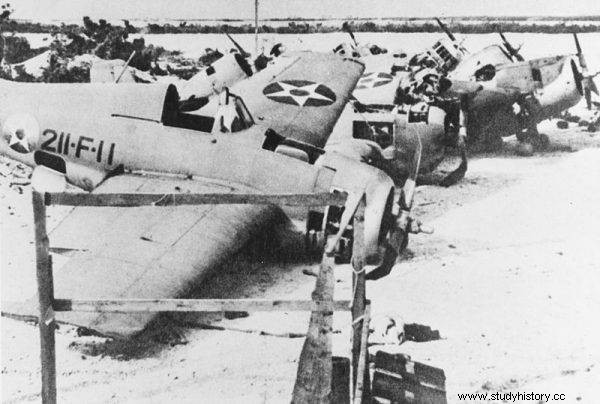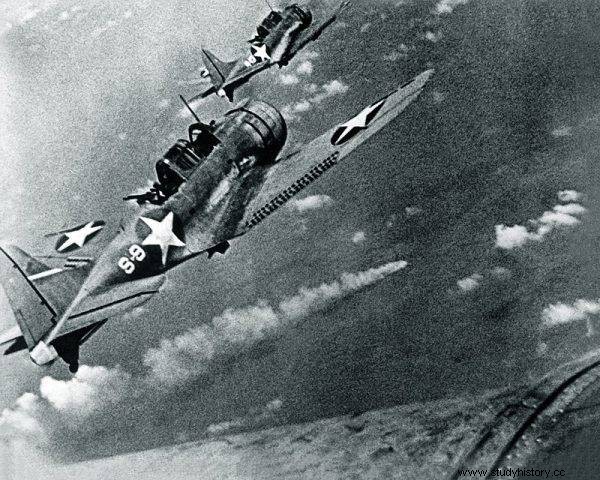The Japanese were extremely brutal towards the captives. Already during the fights with the Chinese, they murdered their opponents for no reason. After the outbreak of the war in the Pacific, they also had no mercy. Especially for Allied airmen.
The Japanese treated the conflict with China as an incident, not a war. Thus, they deprived the prisoners of their rights. The fighting Chinese were considered bandits, not regular members of the armed forces. After the capture of Nanjing, on December 13, 1937, the commander of the 9th Infantry Division, General Kenkichi Ueda, gave the order:
As there are many indications that the battered enemy soldiers are now civilians, we must arrest each suspect and lock them up in a designated place […]. You have to accept that any adult male, even middle-aged man, is a plainclothes soldier or a deserter, and you are to detain and arrest him.
On the same day, General Kesago Nakajima wrote in his diary that "our policy was not to take prisoners, we were forced to liquidate them right after their capture".
To kill at any cost
Often the Japanese did not even wait for the opponent's surrender. Especially when it concerned airmen. On September 19, 1937, they raided Nanjing, in which 17 Aichi D1A2 bombers escorted 17 Nakajima A4N fighters and 15 Mitsubishi A5Ms top escort. Fighters belonging to Pursuit Group 3 took off against them:16 biplane Hawks, five P-26 Boeing and two Fiat CR.32.
The Chinese have suffered a devastating defeat. They lost three hawks, two Boeings and both Fiats. Six more machines were damaged. Two airmen were killed. One of them was Lieutenant Pil. Liu Lanqing of the 17th Pursuit Squadron of the 3rd Pursuit Group. When the Chinese fighters approached the bombers, some of the machines were engaged in combat with the A4N, and the A5M was attacking the P-26. Cf. pil. Liu was shot down in the first attack. He jumped out of the machine and immediately opened his parachute.

The Japanese treated the conflict with China as an incident, not a war.
The Japanese noticed the pilot hanging in the air. They immediately attacked him and shredded him with missiles in several attacks . The Japanese tried to disturb Cpt. pil. John Huang Xinrui, but his machine was hit and he had to evacuate as well. He waited until the last moment to open the parachute.
Like a shooting range
Japanese ground forces often killed airmen who managed to save from downed machines. Especially the crews of bombers and attack aircraft that took their toll on the infantry. Captured prisoners were either cut down with a sword or trained in accuracy without much ado.
Japanese pilots also organized their shooting exercises. On July 18, 1938, a Soviet volunteer Valentin Dudonov collided in the air with an A5M fighter piloted by Nangō Mochifumi. The Japanese pilot was killed. Dudonov parachuted out of his I-15 and landed on the sandy shores of Lake Poyang.
He had just released his parachute harness and was already attacked by the pilot of another A5M. Dudonov started to avoid missiles insanely. He zigzagged, jumped. Eventually, he jumped into the lake and hid under the water. Nevertheless, the Japanese tried to get him. Only running out of fuel forced him to take off and leave his victim alone.
Lt. pil. Was just as lucky. Paul J. Greene of the Flying Tigers, whose P-40E was badly damaged on December 23, 1941, forcing him to abandon the machine. During the descent, Japanese fighters attacked him several times, but he managed to survive. When he returned to the airport, he told the Daily Express war correspondent, O.D. Gallagher:"You want to see my parachute? It has more holes than the nose of the watering can. ”
Bloody Revenge
The British, Australians, Dutch and Americans were lucky enough to be taken captive by the Japanese in their case. Although in practice the provisions of the Geneva Convention were applied very selectively - depending on the mood of the unit commander.
In December 1941, there was a fierce battle for Wake Atoll, which was defended by 217 soldiers, including the VMF-211 Marine Fighter Squadron, which had 12 Grummans F4F-3 Wildcat in stock. The Japanese struck on December 11. The island was attacked by three cruisers, six destroyers, two patrol ships, and two transporters carrying 450 troops on board. Already in the first moments, the shore batteries sank the destroyer "Hayate" and damaged two more. Another ship fell victim to Capt. pil. Henry Elrod, who accurately dropped the bombs on the destroyer "Kisaragi". After two days the Japanese withdrew, returning a week later with considerable force.

Wrecks of seven destroyed on the ground American F4F-3 Wildcat fighters on Wake Island after it was captured by the Japanese.
Two attack aircraft carriers, six heavy cruisers, four destroyers, and 2,500 infantry on transporters appeared under Wake. After two days of bombing and artillery shelling, the Japanese landed the landing. The defenders were equipped mainly with Springfield M1903 rifles, the artillery positions were destroyed. Not a single defender survived in a dozen or so positions.
After an hour of combat, the last American plane was shot down. Then the defenders decided to surrender. 120 of them died. 49 were injured. The Japanese lost 820 killed and 333 wounded. Additionally, four valuable ships and about 10 aircraft.
In January 1942, prisoners of war from Wake and other small garrisons found themselves aboard the "Nitta Maru" ship, on which they were transported to Japan. Five Marines:St. Mar. Theodore Franklin, John Lambert and Roy Gonzales from the VMS-2 squadron, and two non-commissioned officers from VMF-211 - Senior Sgt. Earl Hannum and Sgt. Vincent Bailey, beaten and then beheaded with swords. Later, the trunks were used for bayonet fighting exercises. Eventually the bodies were thrown overboard.
Culture clash
This opponent's behavior shocked Europeans and Americans. The brutality they faced was beyond their comprehension. During the 1942 Malay Campaign, Japanese pilots frequently aimed at Allied parachute airmen. The then lieutenant pil. Herbert Plenty, flying twin-engined Lockheed Ventura in RAAF 8 Squadron, witnessed the Dutch Brewster Buffalo being shot down by Japanese fighters on January 17, 1942.
The pilot parachuted off Bilton Island, a few miles from Singapore. Most of the Japanese fighters returned to their bases. However, as Plenty recalled years later:
two Japanese pilots in a farewell gesture of hatred dove towards the falling parachute and fired long bursts at the Brewster pilot swinging helplessly on the rig canopy. Most of us jumped up with a roar of rage, expressing our feelings.
Japanese pilots just committed an outrageous act of dishonest tactics and a betrayal. Previously, among British and German pilots, there was an unwritten code of honor - chivalrous, if you like - which stipulated that parachuting pilots should not be fired upon by the enemy. The Japanese informed us that they do not have such gentlemanly rules .
Mortal Captivity
The 2019 Hollywood movie "Midway" shows old mate mechanic Bruno Gaido, who himself shot down a Japanese bomber in February 1942 and then died during the Battle of Midway, thrown overboard with an anchor tied to his legs. There is only one element that disagrees in the story. The Japanese tied jugs filled with water to his legs. Moments later, MD, Mar. pil. Frank W. O'Flaherty. None of the crew of destroyer "Makigumo" was held responsible for this murder.
A little earlier, Japanese fighters shot down the TBD-1 Devastator torpedo bomber, commanded by Mar. pil. Wesley Osmus. Two other airmen were killed. The pilot managed to save with a parachute and inflate the life raft. It was waiting for rescue, but it was caught by the crew of the Japanese destroyer "Arashi".

Douglas SBD Dauntless just before the attack on cruiser "Mikuma" during the Battle of Midway.
The commander of the destroyer Cdr Yasumasa Watanabe tortured the pilot during the interrogation. To save a life, he revealed the strength of the Americans. Then the Japanese decided that the young aviator was no longer needed. Osmus was taken aft, where he was struck with an ax. The pilot fell overboard but caught on one of the ropes. The Japanese sailor hit him again and Osmus fell into the ocean.
The longer the conflict lasted, the more brutal the Japanese were. In July 1944, they brutally murdered prisoners in a prison and camp on the island of Dublon . After the war, the resident of the island, Rayphand Rombert, testified that he had heard and seen them lead the American airmen out and beat them up. He also heard screams of Americans tortured during interrogations.
He also saw the Japanese beat up a dozen Allied airmen and then throw a stick of dynamite between them. Bits of bodies, uniforms, and plants flew into the air. Some died on the spot. Other "only" had their limbs torn off. These were killed personally by Lt. Shinji Sakagami.
There were many such victims. In December 1944, three airmen of the downed B-25 Mitchell were burned alive in Hankou. In February 1945, four RAF sergeants, whose Vickers Wellington were shot down over Burma, were tortured, then beheaded, and their bodies were used in bayonet combat. In May this year, 62 airmen from the crews of the bombers attacking Japan were burned alive.
Cannibalism
However, the worst fate befell the pilots who found their way to… Japanese plates. It was not unusual for the Japanese. In December 1944, General Hatazo Adachi, commander of the 18th Army fighting in New Guinea, issued an order forbidding his soldiers to eat the meat of his countrymen, but he saw no such contraindications in the case of the bodies of Allied soldiers.
Soon after, on the island of Wewak his subordinates captured and killed the crew of the Australian Bristol Beaufighter, which they then baked and eaten . The garrison commanders in Manokwari acted more disgustingly, treating the 200 prisoners as a supply of food, killing a few of them from time to time.
The most famous case of cannibalism was on Chichi-Jima, where it was proven that at least seven U.S. airmen were eaten. Navy. Commander of the local navy garrison, viceadm. Kumizo Mori even placed an order for the roasted liver of another American aviator to be shot down over the islands.
It is not known what the scale of the murders of the Allied airmen was. Many of them are still believed to be missing in action or killed. This is especially true of the murders committed on the front line. Overall, about a third of the 320,000 Allied prisoners of war imprisoned in the camps were murdered.
